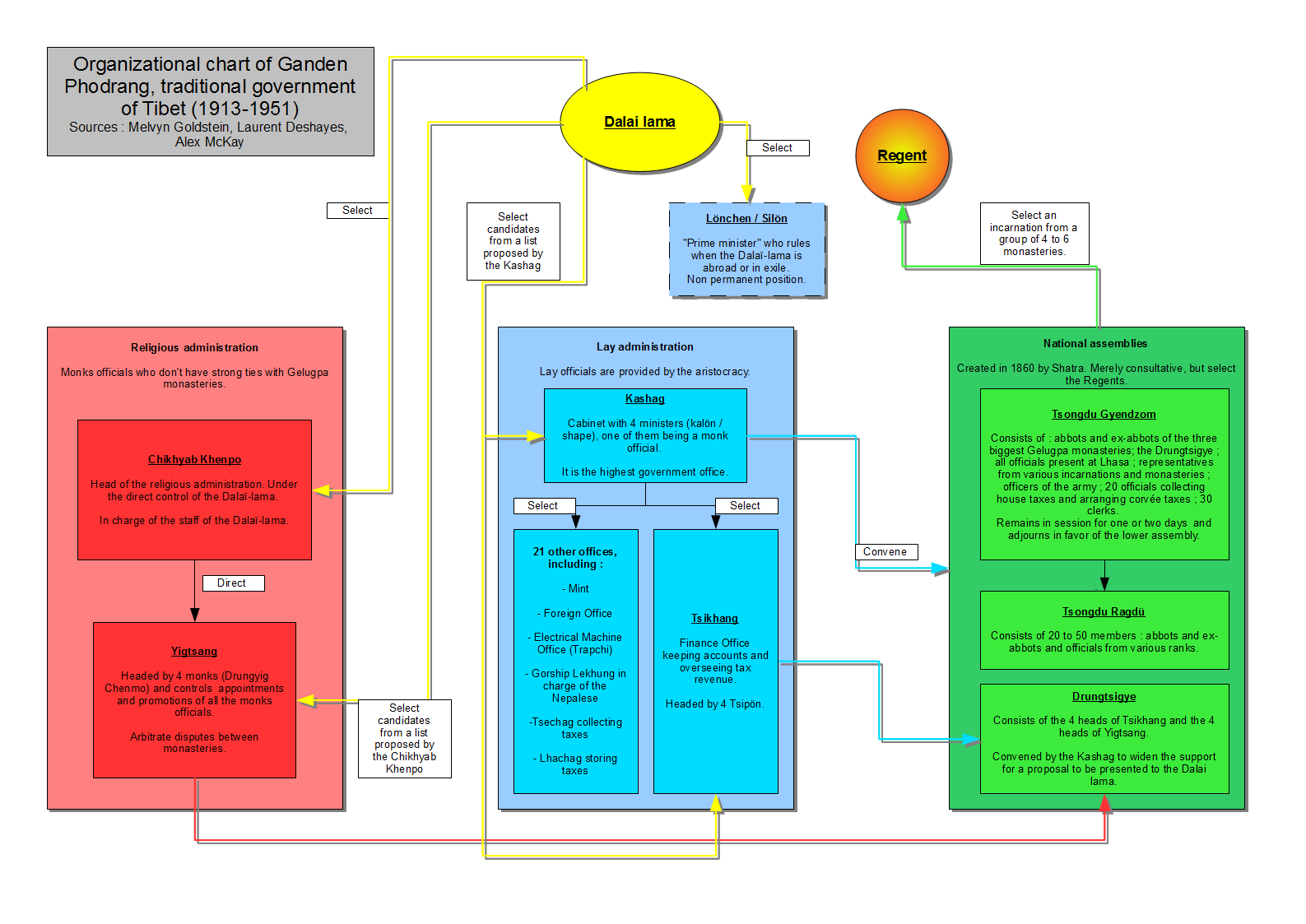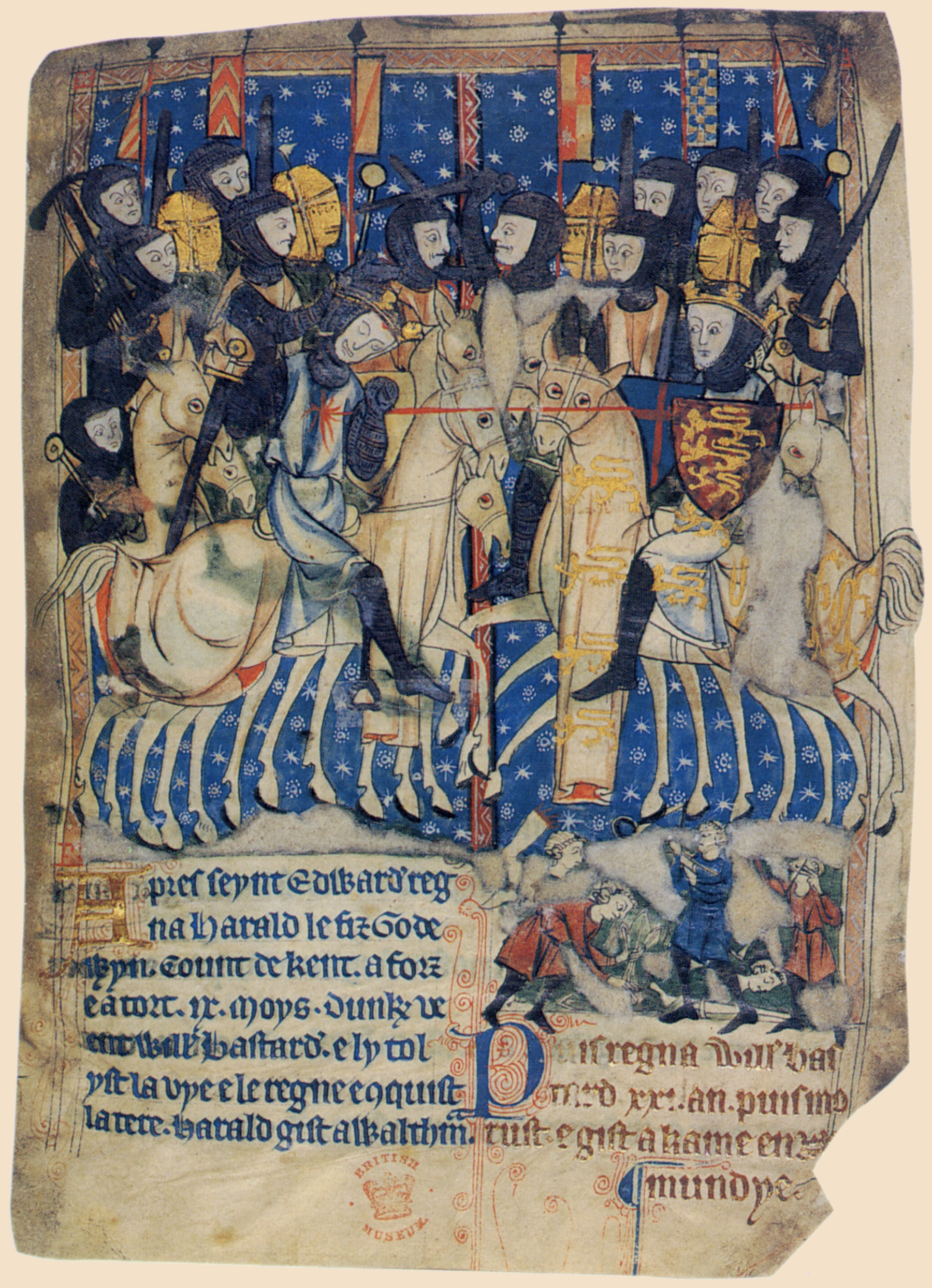|
Sikyong
The () is the political leader of the Central Tibetan Administration, a Tibetan exile organisation in India also known as the Tibetan government-in-exile based on the 2011 Charter of Tibetans-in-exile. The title was created in 2012 after the 14th Dalai Lama decided not to assume any political and administrative authority as the head of the Tibetan Administration for Tibetans-in-exile. The current Sikyong is Penpa Tsering. The Sikyong is the political leader of the Kashag, part of the executive branch of the Central Tibetan Administration. This office should not be confused with the " Chairman of the People's Government of the Tibet Autonomous Region" (). The first directly elected Kalön Tripa was Lobsang Tenzin, the Samdhong Rinpoche, who was elected August 20, 2001. Before 2011, the Kalön Tripa position was subordinate to the 14th Dalai Lama The 14th Dalai Lama (born 6 July 1935; full spiritual name: Jetsun Jamphel Ngawang Lobsang Yeshe Tenzin Gyatso, shorte ... [...More Info...] [...Related Items...] OR: [Wikipedia] [Google] [Baidu] |
Penpa Tsering
Penpa Tsering (; born 1967) is a Tibetan politician based in India. He is the second democratically elected Sikyong of the Central Tibetan Administration in India. He succeeded the last Sikyong Lobsang Sangay on 27 May 2021. Penpa Tsering was the speaker of the Parliament of the Central Tibetan Administration (Tibetan Parliament in Exile) for two terms between 2008 and 2016. Early life Penpa Tsering was born in a refugee camp in Bylakuppe in the Indian state of Karnataka in 1967. After topping his schooling, he graduated with Honours degree in economics from Madras Christian College. Following stints in the Tibetan Freedom Movement and the Nigerian-Tibet Friendship Association during his college days, he went on to serve as the executive director at the Tibetan Parliamentary and Policy Research Centre (TPPRC) in Delhi between 2001 and 2008. TPPRC is a joint project of the Friedrich Naumann Foundation, Friedrich-Naumann Foundation and Assembly of Tibetan People’s Deputies, wit ... [...More Info...] [...Related Items...] OR: [Wikipedia] [Google] [Baidu] |
Central Tibetan Administration
The Central Tibetan Administration (, , ) is the government-in-exile of Tibet, based in Dharamshala, India. It comprises a judiciary branch, a legislative branch, and an executive branch, and offers support and services to the Tibetan exile community. The 14th Dalai Lama formally rescinded the 1951 17 Point Agreement with China in early March 1959, as he was escaping Tibet for India. On 29 April 1959, the 14th Dalai Lama in exile re-established the Kashag, which was abolished a month earlier by the Government of the People's Republic of China on 28 March 1959. He later became permanent head of the Tibetan Administration and the executive functions for Tibetans-in-exile. On 11 February 1991, Tibet became a founding member of the Unrepresented Nations and Peoples Organization (UNPO) at a ceremony held at the Peace Palace in The Hague, Netherlands. After the Dalai Lama decided no longer to assume administrative authority, the Charter of Tibetans in Exile was updated in May 2011 ... [...More Info...] [...Related Items...] OR: [Wikipedia] [Google] [Baidu] |
Constitution Of Tibet
The Central Tibetan Administration (, , ) is the government-in-exile of Tibet, based in Dharamshala, India. It comprises a judiciary branch, a legislative branch, and an executive branch, and offers support and services to the Tibetan exile community. The 14th Dalai Lama formally rescinded the 1951 17 Point Agreement with China in early March 1959, as he was escaping Tibet for India. On 29 April 1959, the 14th Dalai Lama in exile re-established the Kashag, which was abolished a month earlier by the Government of the People's Republic of China on 28 March 1959. He later became permanent head of the Tibetan Administration and the executive functions for Tibetans-in-exile. On 11 February 1991, Tibet became a founding member of the Unrepresented Nations and Peoples Organization (UNPO) at a ceremony held at the Peace Palace in The Hague, Netherlands. After the Dalai Lama decided no longer to assume administrative authority, the Charter of Tibetans in Exile was updated in May 2011 to ... [...More Info...] [...Related Items...] OR: [Wikipedia] [Google] [Baidu] |
Kalön
The Kashag (; ) was the governing council of Tibet during the rule of the Qing dynasty and post-Qing period until the 1950s. It was created in 1721, and set by Qianlong Emperor in 1751 for the Ganden Phodrang in the 13-Article Ordinance for the More Effective Governing of Tibet. In that year the Tibetan government was reorganized after the riots in Lhasa of the previous year. The civil administration was represented by the Council (Kashag) after the post of Desi (or Regent; ''see: dual system of government'') was abolished by the Qing imperial court. The Qing imperial court wanted the 7th Dalai Lama to hold both religious and administrative rule, while strengthening the position of the High Commissioners.Seventh Dalai Lama Kelsang Gyatso ''The Dalai Lamas of Tibet'', p. 101. Thubten Samphel and ... [...More Info...] [...Related Items...] OR: [Wikipedia] [Google] [Baidu] |
14th Dalai Lama
The 14th Dalai Lama (born 6 July 1935; full spiritual name: Jetsun Jamphel Ngawang Lobsang Yeshe Tenzin Gyatso, shortened as Tenzin Gyatso; ) is the incumbent Dalai Lama, the highest spiritual leader and head of Tibetan Buddhism. He served as the resident spiritual and temporal leader of Tibet before 1959 and subsequently led the Tibetan government in exile represented by the Central Tibetan Administration in Dharamsala, India. A belief central to the Tibetan Buddhist tradition as well as the institution of the Dalai Lama is that he is a living Bodhisattva, specifically an emanation of Avalokiteśvara (in Sanskrit) or Chenrezig (in Tibetan), the Bodhisattva of Compassion. The Mongolic languages, Mongolic word ''dalai'' means ''ocean.'' He is also known to Tibetans as Gyalwa Rinpoche ("The Precious Jewel-like Buddha-Master"), ''Kundun'' ("The Presence"), and ''Yizhin Norbu'' ("The Wish-Fulfilling Gem"). His devotees, as well as much of the Western world, often call him ''His Ho ... [...More Info...] [...Related Items...] OR: [Wikipedia] [Google] [Baidu] |
Paljor Dorje Shatra
Longchen Shatra Paljor Dorje (), commonly known as Shatra (c. 1860 – c. 1923/1926), was a Tibetan politician. Family Shatra belonged originally to the Shangga family. He married, however, into thShatrafamily, took their name and was a wealthy man. Shatra's son is the former Kalon (Religion Minister) Shasur Gyurme Sonam Topgyal, also known aShenkhawa Career In 1890 he accompanied the Chinese amban on his trip to Darjeeling and supported him during the negotiations leading to the Anglo-Chinese border treaty. Shortly afterwards he was appointed Shappe (Minister). In 1903, he and the other three members of the inner cabinet (Kashag) were accused of treason by the Tsongdu for conspiring with the British. Conversely, however, the British accused him of conspiring with the Russians because of his cooperation with Agvan Dorzhiev.Shakabpa, Tsepon Wangchuk Deden (4th edition 1988) ''Tibet: A Political History'', Potala Publications, New York, , pag. 203, 239, 262-263 The result of ... [...More Info...] [...Related Items...] OR: [Wikipedia] [Google] [Baidu] |
Hastings House Calcutta 1910 (Sholkhang)
Hastings ( ) is a seaside town and borough in East Sussex on the south coast of England, east of Lewes and south east of London. The town gives its name to the Battle of Hastings, which took place to the north-west at Senlac Hill in 1066. It later became one of the medieval Cinque Ports. In the 19th century, it was a popular seaside resort, as the railway allowed tourists and visitors to reach the town. Hastings remains a popular seaside resort and is also a fishing port, with the UK's largest beach-based fishing fleet. The town's estimated population was 91,100 in 2021. History Early history The first mention of Hastings is from the late 8th century in the form ''Hastingas''. This is derived from the Old English tribal name ''Hæstingas'', meaning 'the constituency (followers) of Hæsta'. Symeon of Durham records the victory of Offa in 771 over the ''Hestingorum gens'', that is, "the people of the Hastings tribe." Hastingleigh in Kent was named after that tribe. The plac ... [...More Info...] [...Related Items...] OR: [Wikipedia] [Google] [Baidu] |
Lobsang Tashi
Lobsang Tashi (Tibetan: བལོ་བཟནག་བཀྲ་སྷིས, Wylie: ''blo-bzang bkra-shis''), also known as Khenchen Lobsang Tashi (1897–1966) was a Tibetan politician who was a senior monastic official and the monastic prime minister (''sileun'') of the Tibetan government during the early Chinese occupation of Tibet. After the departure of the 14th Dalai Lama in 1959, he was incarcerated in Drapchi Prison where he died in 1966.Michael Harris Goodman, '' Le dernier Dalaï-Lama ? Biographie et témoignages'', Editeur Claire Lumière, 1993, Biography In the late 1930s, Lobsang Tashi was assigned to the Tibet office in Nanjing, where he interacted with the Chinese. He was appointed as a monastic prime minister, along with Lukhangwa, a senior lay official, by the Dalai Lama before he left for Yatung in the Chumbi Valley in December 1950 following the Chinese invasion of Tibet. The Dalai Lama conferred on them the full powers of the government of Tibet. I ... [...More Info...] [...Related Items...] OR: [Wikipedia] [Google] [Baidu] |





